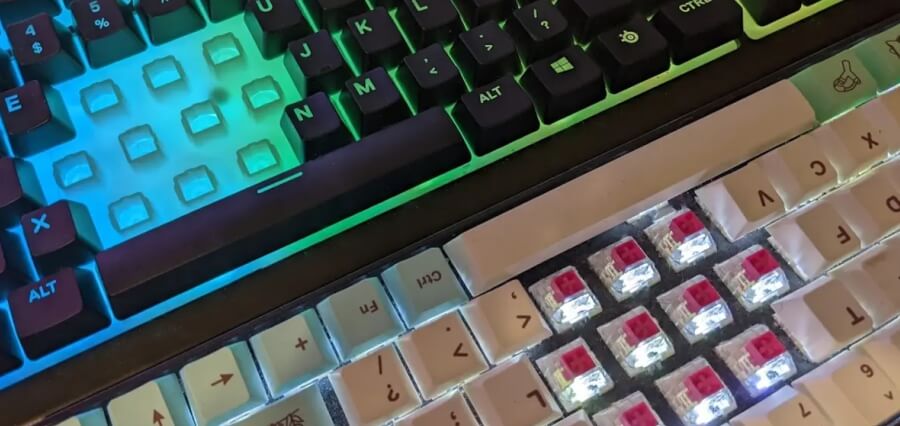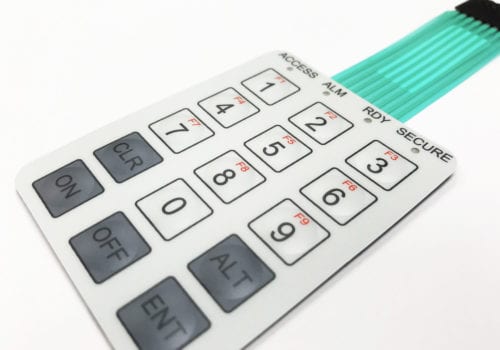Important Attributes to Search For When Picking a Membrane Switch
Important Attributes to Search For When Picking a Membrane Switch
Blog Article
Recognizing the Functionality of Membrane Layer Switches for Interface Gadget
The performance of membrane changes represents a significant advancement in user interface layout, integrating performance with aesthetic adaptability. As markets significantly focus on customer experience, recognizing the subtleties of membrane switch technology becomes essential.
What Are Membrane Buttons?
Membrane layer switches are ingenious interface gadgets that assist in user interaction with digital equipment. These functional components include multiple layers, including a visuals overlay, spacer, and a printed circuit layer. The style permits a seamless combination into various digital devices, enhancing both the visual and useful aspects of interface.
Membrane buttons are generally employed in a vast range of applications, from family appliances to industrial machinery and clinical gadgets. Their building usually includes a thin profile, making them an optimal selection for compact designs. The tactile feedback supplied by these switches can be crafted to satisfy specific user choices, making sure efficient communication in between the user and the gadget.
Sturdiness is another significant benefit of membrane layer switches, as they are resistant to dirt, dampness, and chemicals, which enhances their life-span sought after atmospheres. In addition, these buttons can be customized in terms of form, dimension, and graphic design, permitting branding and user-specific features. Generally, membrane switches stand for a sensible service for improving individual experience in electronic devices, combining performance with aesthetic charm in an efficient manner.
How Membrane Layer Switches Work
Operating on an uncomplicated concept, membrane switches make use of a split construction to register individual input successfully. Each switch contains multiple layers, including a published circuit layer, a spacer layer, and a leading visuals layer, which are developed to collaborate flawlessly. When a user presses the top layer, it compresses the spacer layer, bringing the conductive aspects of the circuit layer into contact with each other.
This get in touch with creates a shut circuit, signifying the device to perform a particular function. The design enables numerous arrangements, including tactile responses, which can improve the customer experience by offering a physical experience upon activation. The materials made use of in membrane buttons usually consist of flexible substrates, such as polyester or polycarbonate, which make certain durability and durability against deterioration.

Key Advantages of Membrane Layer Switches

Another substantial benefit is their density. Membrane layer switches are thin and lightweight, which enables makers to save space in their devices without sacrificing performance. This feature is specifically advantageous in applications where weight and volume are important considerations.
In addition, membrane layer buttons are immune to dust, dampness, and chemicals, boosting their toughness. This resilience prolongs their life expectancy and minimizes the requirement for regular substitutes, causing price financial savings gradually.
Furthermore, the tactile feedback given by membrane buttons can be maximized to boost customer interaction. They can include features such as increased switches or distinct clicks, boosting usability and individual experience.
Applications Across Industries
Interface tools using membrane layer buttons prevail in a vast variety of sectors, showcasing their flexibility and performance. Membrane Switch. In the medical industry, membrane switches are essential to tools such as analysis tools and patient surveillance systems, where their longevity and convenience of best site cleaning are essential for maintaining health standards. Similarly, in the automobile market, these buttons are employed in dashboard controls and infotainment systems, supplying a sleek and modern-day user interface for individuals.
Additionally, the consumer electronic devices industry gain from membrane layer buttons in appliances and handheld gadgets, where compact style and straightforward interfaces improve individual experience. Industrial applications likewise utilize membrane switches for control panels in equipment and automation systems, stressing their toughness and resistance to severe environments.
In the aerospace and defense markets, membrane layer switches are made use of in This Site cabin controls and devices, where dependability and efficiency under extreme problems are paramount. Furthermore, the pc gaming market significantly integrates membrane buttons in controllers and arcade machines, adding to an engaging customer experience. In general, the convenience of membrane switches over enables their prevalent usage throughout countless markets, highlighting their significance in contemporary interface layout.
Future Fads in Membrane Switch Over Modern Technology

In addition, the usage of advanced materials, such as polycarbonate and polyester movies, is expected to increase, giving boosted toughness and resistance to environmental stress factors. These products add to the total durability of membrane layer switches, making them ideal for harsher industrial applications.
In addition, the unification of clever modern technology, including IoT connection, will certainly enable membrane layer switches to connect with various other devices and systems, promoting a much more interactive individual experience. This fad lines up with the growing need for smart gadgets throughout different industries, from healthcare to customer electronics.
Finally, customization choices are prepared for to increase, enabling suppliers to produce bespoke options customized to certain individual requirements and choices. These developments will position membrane switches as crucial elements in the advancement of interface technology.
Verdict
In conclusion, membrane switches represent a pivotal improvement in individual interface modern technology, supplying a dependable and versatile service for varied digital applications. As improvements in product science and touch picking up innovations proceed, the functionality and applicability of membrane switches are expected to broaden, enhancing their value in modern-day electronic gadgets.
Report this page